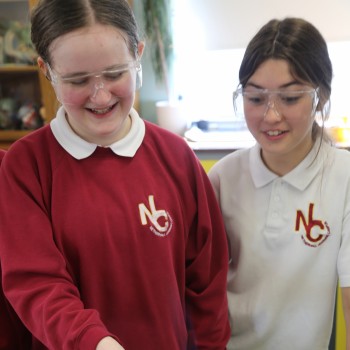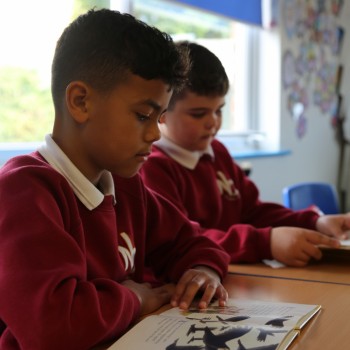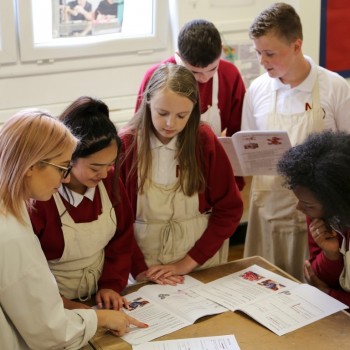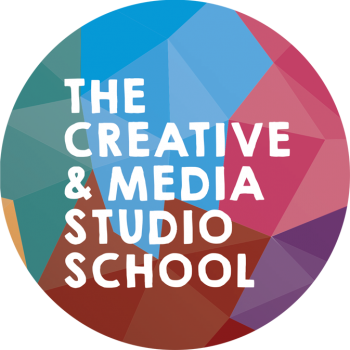Reading and Phonics
In our school children are taught to read through phonics.
They are taught to
- Recognise each letter by the sound it makes
- Identify the sounds that groups of letters make e.g. sh as in ship, ee as in feet. These are called ‘special friends’.
- Blend these sounds together from left to right to make a word c-a-t = cat, d-o-g = dog, f-i-sh = fish, n-igh-t = night. We call this ‘Fred Talk’
‘Fred the Frog’ helps us to sound out the phonemes in our words then blend them together to say the whole word.
The sound each letter or group of letters makes is called a phoneme.
The scheme includes both a reading and a writing focus. Within Read Write inc. children learn to:
- apply the skill of blending phonemes to read words
- segment words into phonemes in order to spell words
- read high frequency words that do not follow regular phonic patterns.
- read texts and words that are within their phonic capabilities as early as possible
- decode texts effortlessly so all their resources can be used to understand what they read.
- spell effortlessly so that all their resources can be directed towards composing their writing.
Set 1 (Nursery and Reception)
In Nursery phonics is taught through listening games and activities to encourage children to hear the sound around them and in words. They complete a range of interactive games such as animal sound bingo and listening walks to really help them tune into new and unfamiliar sounds. This progress to making voice sounds and trying to blend the sounds in words using Fred the frog games!
Moving on in Reception children begin to learn letter sounds through speed sounds lessons, where children learn how to write and name letter sounds and Fred talk words to practice blending. Each letter sound has a picture and rhyme that help with letter formation and recognition of the sounds.
Alongside speed sounds lessons children are taught how to blend by building words with letter tiles and using Fred to model how to say the sounds together in simple 3 letter words.
Once children have mastered blending, we begin to read simple captions and stories using our Read, Write, Inc books and begin to build sentences using words from the story books. This takes place every Thursday and Friday when we have longer phonics application sessions to really help build our confidence and skills for reading and writing.
More information on how to help your child with their reading and writing using Read, Write, Inc can be found on their website with some helpful videos: https://www.ruthmiskin.com/en/find-out-more/parents/
Set 2 and Set 3 (Year 1 and Year 2)
Each Read Write inc. lesson begins with a ‘speed sounds’ session.
This involves learning a new sound and practising previously taught sounds, then Fred Talking words including these sounds.
Set 2 and 3 sounds include ‘Special Friends’ which are sounds with 2 or 3 graphemes (letters) in them e.g. oi for coin and air for chair.
Within the reading session, children within the same reading group will read the same book in partners. Read write inc books progress to ensure children are reading books with sounds in that have already been taught. This allows children to develop fluency and expression. Children then show they have understood the story by answering 'Find It' and 'Prove it' discussion questions and developing a piece of writing about the story.
Within reading groups, children will read their book 3 times to develop fluency, whilst engaging in phonic, spelling and grammar activities in between. This gives children the opportunity to read and reflect on a range of texts e.g. stories, poetry and information.
Within Year 2, children will complete the Read Write inc. programme and use the skills they have acquired as well as developing new skills to become fluent readers and increasingly accurate spellers.
In our school we encourage a love of reading and promote the reading of a wide range of books. We are always looking for ways to develop ‘Reading for pleasure’ such as sending library books home for children to read, Reading Buddy bags to send home and holding themed events such as ‘Reading Week’.
Research shows that reading with your child is one of the most important things you can do to help their education.
There are plenty of reading opportunities everywhere so please try to ensure you encourage your child to see print in the world around them as well as sharing books, comics and other age appropriate reading matter.
The internet offers many helpful reading hints and tips to help support you and your child with their reading. Here are just a few
- http://www.springboard.org.uk/data/files/Parents/parents-little-guide.pdf
- http://www.booktrust.org.uk/programmes/primary/time-to-read?gclid=CMnxr_r1i88CFUE_GwodTSoMYg
- http://www.readingrockets.org/article/reading-tips-parents-11-languages
Learning to Read
We would like to share with you this really helpful website which helps to explain phonics and early reading. It is linked with our new approach to reading called Read Write Inc which is having a great impact on the children’s progress and attainment in both reading and writing.
The link is
https://www.oxfordowl.co.uk/for-home/reading/phonics-made-easy
We hope you find it useful


 Welcome from the Principal
Welcome from the Principal


